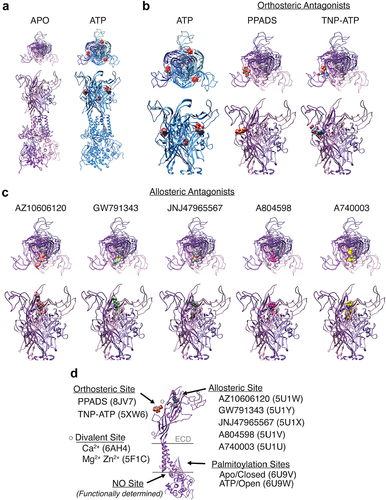Figures & data
Figure 1. Functionally important binding sites aligned on full-length P2X7 structure. (a) full-length structures of rat P2X7 in the putative closed (Apo, 6U9V) and open (ATP, 6U9W) states. (b,c) top-down (top) and side-on (bottom) views of the three, inter-subunit, ATP binding sites (B, ATP), and single orthosteric binding sites (B) and allosteric binding sites (C). (d) side-on view of a single P2X7 channel subunit (6U9V) to highlight locations of relevant binding sites and functionally important features.

Table 1. P2X7 agonists, antagonists, and modulators: effects on function and/or expression.
Table 2. P2X7-selective and nonselective antagonist co-crystals.
Table 3. P2X7 inhibitors in clinical trials.
Data availability statement
Data sharing is not applicable to this article as no new data were created in this study.
